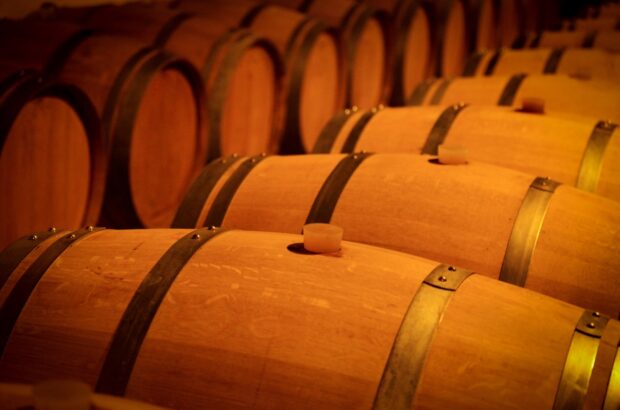A culture of bitter, savoury and textural foods means the palates of Asian wine lovers differ greatly to those in the West. Jeannie Cho Lee MW reports.
The Japanese manga comic about wine, Les Gouttes de Dieu, has been on the best-seller list for the past few years in Japan and Korea. Translated into several Asian languages and most recently into French, the book has such a following that retailers and restaurant managers from Taipei to Tokyo admit to listing wines simply because they are mentioned in the comic strip.
The popularity of an adult comic on wine may seem surprising, but it demonstrates the growing number of young Asian wine lovers thirsty for knowledge with the desire to experiment and have fun with wine. One key way the comic touches Asian wine lovers is by offering visual reference points for specific wines based on an experience, rather than offering a litany of classic descriptors. Château Boyd-Cantenac 2001 is portrayed as a masquerade party, with no reference to cassis or cedar. The popularity of the comic throughout Asia highlights the need for new ways of communicating about wine via reference points that connect wine with something familiar and known.
One way many Asians are relating to wine when assessing tannins, acidity, sugar levels and styles (restrained versus forward or savoury versus sweet) is by referring back to familiar foods and dining habits.
Cultural differences
The tolerance level for tannins varies widely throughout Asia by culture and region, but what is notable is that regular bitter tea drinkers (whether it is the green tea of Japan or the black tea of southern China) have a higher tolerance for elevated tannins in wine.
Higher tannin tolerance is also found among societies that eat a large number of bitter vegetables, such as ginseng and radish, a mainstay of the Korean diet. For these societies, full-bodied, tannic red wines are enjoyable with just about any type of food.
Acidity in wine poses a double-edged cultural challenge, since high acidity is often combined with cool serving temperatures. Few Asian cultures have a history of consuming cold beverages at the dining table. Even tea-drinking cultures often limit tea intake to before and after a main meal. Instead, hot soups provide the main liquid during a meal. The only exceptions are during yum cha – where dim sum are eaten with tea – or with snacks (xiao chi) taken between main meals in teahouses. High-acid, sour foods are also normally tempered with sugar or longans and star fruits are more familiar reference points in white wines for Asian wine lovers (centre)limited to a condiment, accompaniment or dip. Pickled sour vegetables, popular in nearly all northeast Asian countries in some form, are merely a side dish, never a main meal. Because of this, wines with sharp acidity and thin mid-palate are unfamiliar tastes for many Asian cultures.
The most refined Asian dishes are savoury rather than sweet. Consider Cantonese food where sweetness is derived from the main ingredients rather than any addition of sugar. In Japan, the savoury flavour of umami is especially prized and sugar is used sparingly to round out the addition of vinegar or salt. The continuing popularity of the umami-laden flavour enhancer monosodium glutamate (MSG) in Asia, despite its well-documented negative impact on health, is testament to this. Even in blind tastings, Asians who are complete wine novices prefer the restrained savoury fruit and tannic reds of Bordeaux over sweet, ripe- fruited reds from warmer climates.
Sweet or off-dry wines face another cultural challenge. Overt sweetness in food is considered immature and unrefined. Sweet-and-sour dishes are usually served to children or western visitors, but rarely consumed at home or ordered in restaurants. The best Chinese, Korean, Japanese, Thai or Vietnamese dishes have carefully measured sweetness levels. Any addition of sugar at the dining table would detract from the integrity of the dish. Note also that condiments at a typical Asian table are rarely sweet; most are salty, savoury or spicy. The long-held belief about off-dry and sweet wines such as Riesling Spätlese or late-harvest Gewürztraminer being the best pairing with Asian cuisines is a myth spread by Western palates.
Texture and subtlety
An Asian palate is a concept whose definition is controversial. But the premise backs up what we have already seen: tolerances and preferences differ from Western palates. There are likely numerous explanations for this – cultural, physiological and sociological. But empirical evidence suggests that familiarity with flavours inherent in one’s food culture has a strong influence on preferences for different wine styles and flavours.
Among the first generation of wine lovers in Asia who started buying wine seriously in the 1970s, the appreciation for texture and other subtleties is evident in their love for mature fine wines. Sommeliers recruited from Michelin-starred European restaurants to head fine dining establishments in Hong Kong or Tokyo are astounded by the number of very mature, fine wines diners regularly enjoy. The surge in prices for mature wines at auction is partially attributed to this growing demand.
The explanation is not surprising when one looks at what are considered the finest ingredients in Asian cuisine. Toro (fatty tuna), uni (sea urchin), Kobe beef, shark’s fin, bird’s nest, abalone and sea cucumber all share one thing: subtle flavours but an extraordinary mouthfeel. Similarly, the best mature Bordeaux, Rhônes, Burgundies, Napa Cabernets or Australian Shirazes, given sufficient bottle age, possess finely knit textures. The wine’s fruit compounds have intertwined with its acidity, phenolic compounds and other extracts to create a cashmere palate that is increasingly prized. Because of this love of style over substance, serious Asian wine drinkers are also very forgiving of lack of fruit or subdued flavours.
The Asian palate is also united in another important way: food is taken very seriously. If specialisation is evidence of advancement in any field, then the major Asian cities are leading the way in the area of food. Restaurants are sought out for the one dish in which they excel; that has made their reputation among a nation of foodies. The best and most popular restaurants in Seoul, Tokyo, Taipei, Kuala Lumpur or Bangkok are those that have fewer than 10 items on their menu; everyone is there to order the restaurant’s one claim-to-fame dish, be it spicy kimchi, hand-made soba noodles or green curry.
For a continent obsessive about food, wine is often seen as an afterthought or drink enjoyed with an occasional Western meal. When the language of wine is so challenging, combined with the lack of familiar reference points to relate wine with a uniquely Asian experience, it is not surprising that a comic, with its exaggerated visual images of wine, is so popular. The language used by Western wine critics is full of unfathomable descriptors for the Asian wine lover and nuances often get garbled in inconsistent translations along the communication channel. Reading Les Gouttes de Dieu in Korean or Japanese for a wine lover well-versed in English is a challenge in itself – it takes several attempts to figure out that ‘do-men pil-lib bang-sang re-se-no’ is actually Domaine Philippe Vincent Lecheneaut.
The popularity of this manga comic proves that there is a great interest in and curiosity about wine in Asia. But most importantly, there is a desire to better enjoy and understand it.
Written by Jeannie Cho Lee MW






